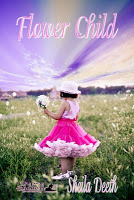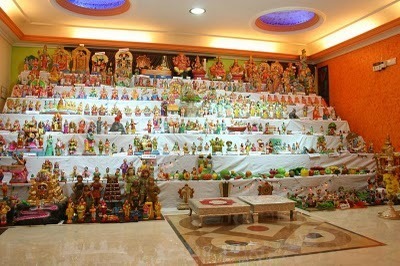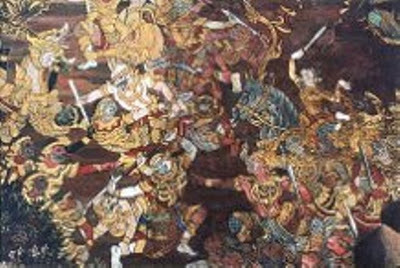Cheryl Snell's Blog, page 22
October 9, 2011
How I Fell in Love...with my novel
romance I drafted a few poems on the subject, then tried it as a story. I flirted with the possibility that my project could develop into a novel. I entertained ideas for a protagonist who had to deal with more than Sanyasi man's yoke of tradition and conflicting familial expectations. I began to wonder how his wife felt. What was she like, anyway? A portrait of my fierce matriarch Amma emerged from under my pen. I set her in a milieu, got her into trouble. The conflict appeared as the character of Alice, the American "unsuitable bride" to a favorite son.
passion I became absorbed by Indian myths, customs, and philosophy that would flesh out my characters. My research took me on a wild ride: I learned to cook my characters' favorite dishes, played the music they listened to, learned to speak a few words of Tamil. The overarching theme of divided loyalties in the work took shape as my characters ran amok in interesting ways, startling me. They invaded my dreams. I slept with a notepad ready to receive unconscious insights, and spent my waking hours focused on my story.
intimacy At a certain point, you've gained entry into the characters' heads and they begin to sound distinct from one another. Would Amma really respond that way to a stewardess? Did that subversive vibe suit Alice better than Nela? The mystery of creating takes the writer over, and the creations become palpable, even more insistent on their own agenda. Listening to my characters' desires is similar to listening to my own intuition, the same small voice that can so easily be drowned out.
commitment During this stage, you can count on a test of endurance. You are tired. You have compassion-fatigue for your characters. You wish they would shut up. The blandishments of the real world you were so recently able to resist, are irresistible now. You pick up a fashion magazine for the first time in ages. The phrase I'll write tomorrow pops into your mind, and it seems ok to cheat on today's session. All right. So take a break. The work continues underground and seeps through in dreams, if you're lucky -- and finally, out of desperation, disgust, deadlines or something more positive, you'll feel a surge of energy one fine day. What are they doing? you'll wonder about your people. You'll pick up your pen. You'll find out.
October 8, 2011
Dusshera

 The Dusshera celebration in southern India revolves around Chamundi, the family deity of the Maharaja of Mysore. Similar to the Durga Puja myth in east India, this story says that Lord Rama performed chandi puja to invoke the blessings of Goddess Durga for slaying Ravana, so the gratified Goddess Chamundeswari (same goddess) told him how to slay Ravana.
The Dusshera celebration in southern India revolves around Chamundi, the family deity of the Maharaja of Mysore. Similar to the Durga Puja myth in east India, this story says that Lord Rama performed chandi puja to invoke the blessings of Goddess Durga for slaying Ravana, so the gratified Goddess Chamundeswari (same goddess) told him how to slay Ravana.A parade of decorated elephants is led to the Maharaja's illuminated palace as part of the spectacular festivity.

Twenty days after Dusshera, Diwali arrives--the Festival of Lights. I'm just sayin'.
October 6, 2011
Red Booth Review, part deux
October 5, 2011
Rama vs Ravana
October 4, 2011
Navaratri:Saraswati puja
"When you were five, I remember your father helping you to form the sacred letter Shri on your first Saraswati puja. We had chosen the books for the altar and I added a harmonium. The Goddess of Learning loves music! Your aunties and I wore yellow saris and made coconut koyakattai. I was so proud when you were old enough to read at the altar beside your father. But very soon, you would whisper to him, as if the Goddess might overhear, "Is that enough, Appa?" It was the same way Ram always asked Samba." (from Shiva's Arms)
Sanskrit slokas like this one are recited: Shrii Saraswatii Namahstubhyam Varade Kaama Ruupini/Twaam Aham Praarthane Devii Vidyaadaanam Cha Dehi Me(I bow to Goddess Saraswati, who fulfills the wishes of the devotees. I pray her to enlighten me with knowledge.)
On this day, Vidyarambham, Hindu children are taught to write their first word. The women, in yellow saris, decorate with palash flowers or marigolds, and distribute coconut koyakkatai as prasad for the worshippers. Initiation into the world of alphabets usually begins with the writing of the mantra Om hari sri ganapataye namah" Hari refers to the Lord, sri to prosperity.
The mantra is written first on sand, denoting practice; then in a tray of rice grains, representing the acquisition of knowledge, which leads to prosperity. Finally, the priest writes the mantra on the child's tongue with gold, symbolic of the wealth of true knowledge.
September 30, 2011
Flower Child by Sheila Deeth

 It's my pleasure to bring you a guest post on inspiration by Sheila Deeth. She is on blog tour with her third speculative Christian novella, the ebook Flower Child, published by Gypsy Shadow Publishing, and we so pleased to have her with us today.
It's my pleasure to bring you a guest post on inspiration by Sheila Deeth. She is on blog tour with her third speculative Christian novella, the ebook Flower Child, published by Gypsy Shadow Publishing, and we so pleased to have her with us today.About Flower Child: When Megan miscarries her first pregnancy it feels like the end of everything; instead it's the start of a curious relationship between the grieving mother and an unborn child who hovers somewhere between ghost and angel. Angela, Megan's "little angel," has character and dreams all her own, friends who may or may not be real angels, and a little brother who brings hope to her mother's world. But Angela's dream-world has a secret and one day Angela might learn how to be real.
About the author: Sheila Deeth grew up in the UK and has a Bachelors and Masters in mathematics from Cambridge University, England. Now living in the States with her husband and sons, she enjoys reading, writing, drawing, telling stories, running a local writers' group, and meeting her neighbors' dogs on the green.
Find her on her website: http://www.sheiladeeth.com
or find her books at: http://sheiladeeth.weebly.comHow did a John Denver tune spark the idea for Sheila's book? She writes:
Write something inspired by music—that's what our local writers' group prompt said for their monthly competition. Which would be fine, except I don't listen to music when I'm writing; there wouldn't be any point. I start writing and the voices take over in my head and the rest of the world might as well not exist. My husband finds it most annoying. My son just throws things at me. But I really wanted to enter the competition—it would spoil my record of never missing one if I didn't.
Perhaps I could think of some favorite music, except you might as well ask me about my favorite novel; I like so many different ones, I don't have favorites. According to my kids, I don't have taste either since I enjoy so many genres, of novels and of music. So what could I do?
Eventually I decided I'd write something based on whatever the first piece of music (with words) to come into my head was. I drove home from the meeting, sun shining, all's right with the world, and began to sing "The children and the flowers are my sisters and my brothers." I had to search the internet to find what the music was called—John Denver's Rhymes and Reasons. But starting a story from those words couldn't be too hard, could it?
Children and flowers—I always like to have at least two prompts. A friend of mine says that's because it engages the connections in the brain; wondering how to connect the prompts inspires creativity. Perhaps she's right. Anyway, I found myself remembering when I was a small child and asked that familiar question, "Where do babies come from?" My mother, ever honest, gave a beautifully well-thought-out answer that involved the word seed. I didn't get any further—remember what I said about the voices in my head—I was a pretty scatterbrained kid. I stopped listening and imagined a heavenly garden where angels guarded seeds as they grew into children. It made perfect sense, to me anyway. And the line from John Denver's song brought the image back to mind.
I started writing with no idea where the story would go. An imaginary character was telling how she'd made the same childhood mistake as me. But now, as an adult, she thought perhaps she'd been right. How could that be?
Dead to the world, not listening to music or anything my husband and son cared to say to me, I continued to type. Poor Megan, living inside my head, explained how her first pregnancy ended in disaster and miscarriage, and then something happened… Somehow she came to believe again in that celestial garden, and the rest is Flower Child.
I'm not sure the story was really inspired by music, but I guess the words of the song played the part of a muse as I began to type. Song, words, memory and random connections…
What sort of things inspire you?
I'm really grateful to Cheryl for welcoming me to her blog, and for giving Flower Child such a lovely review!
Where to find Flower Child: http://gypsyshadow.com/SheilaDeeth.html#Flower
On Amazon: http://www.amazon.com/Flower-Child-ebook/dp/B005PGMT4O/ref=sr_1_1?ie=UTF8&qid=1317398482&sr=8-1
on Smashwords: http://www.smashwords.com/books/view/91467
Thanks so much for visiting Shiva's Arms today, Sheila!
September 27, 2011
The Festival of Dolls in Navaratri

Navaratri marks the beginning of a semi-annual festival celebrating female divinity. Nava means nine and Ratri means nights. During these nine nights and ten days, women visit one another in their homes, decorated with lights and Golu displays of dolls.Dolls for Golu often represent major deities recreating mythological events, but the quotidian is also well-represented, often by Barbies dressed in native outfits ,as I describe in my novel Shiva's Arms. A doll-couple is often included --no,not like Barbie-and-Ken. My husband remembers a particular pair of wooden Marapachi dolls his mother used in the ceremony, carefully put away after Dusshera, for the next time.
The golu display stand is made up of an odd number of tiers, ideally nine, and the dolls are arranged like this --
Tiers 1-3: (Kalasam) Durga, Lakshmi, Saraswati, Shiva, Vishnu, Brahma and all other gods and goddesses are set here.
Tiers 4-6: Saints and national leaders like Mahatma Gandhi, Ramakrishna Paramahamsar, and Swami Vivekananda occupy this level.
Tiers 7-9: Scenes depicting family, marriage,nature, and festivals go here, with the ornamented Marapachi dolls last.
In my novel, Shiva's Arms, I use this celebration of female friendship as a way to get my warring women to come together.
"It was late when Alice wandered downstairs. She expected that Amma would have gone to bed, but she was still at her task, busy with the display. She motioned to Alice to help her set up the rest of the dolls. There were brass and sandalwood gods and Malibu Barbies, an American bride doll and Japanese geishas collected one at a time, each one with a history.
"We will make kolam on the porch tomorrow," Amma said. "You have colored chalks. My son is keeping big lamp in Christmas trees?"
"In the box of Christmas decorations, yes."
By two in the morning the display was finished, Sam's toy trucks and metal sport cars tucked among the stuffed Santa, Russian stacking dolls and Marapachi dolls. The suitcase and Christmas box were hollowed out at last. "Very multi-culti," Alice said. She stood back from the creation and looked at it critically, squared off the crèche with both palms. She had somehow made Amma understand that sand made of lentils was no replacement for cotton-ball snow. She turned tiny white blinking lights on, and the sequins on the cotton glittered. Amma clasped her hands to her heart.
"Just a sec. One more thing," Alice said. She ran upstairs and returned with an angel from the back of her closet, the one relic from her childhood. She handed it carefully to Amma, blue felt skirt first. The wax face with the wistful smile, blonde curls and gold wire halo were miraculously untouched by time.
Amma reached up and put the little cherub right in the center of the top tier. The women stood in front of the rows of dolls, mesmerized for a long minute. Alice broke the spell first, yawned and stretched her tight lower back. She turned away, shuffled into the kitchen and warmed some milk, enough for two, on the stove. Amma followed her on bare feet, cut a banana in half and handed one part to Alice. "Take," she said. "Eat some." Alice received the fruit like a gift."




